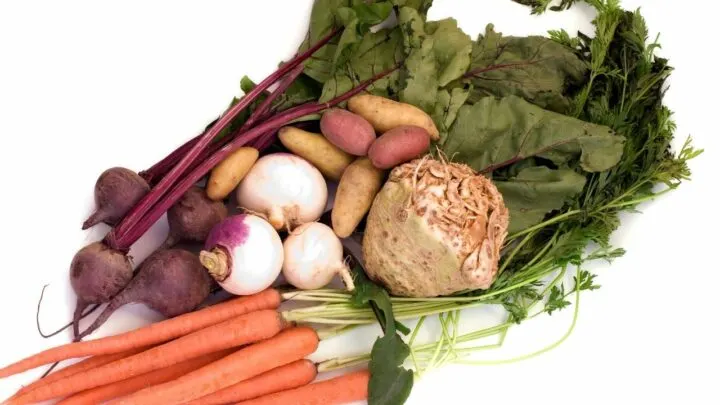You are here to get a list and picture of the best underground vegetables. I grow vegetables for many seasons now, and here are the ones I like the most.
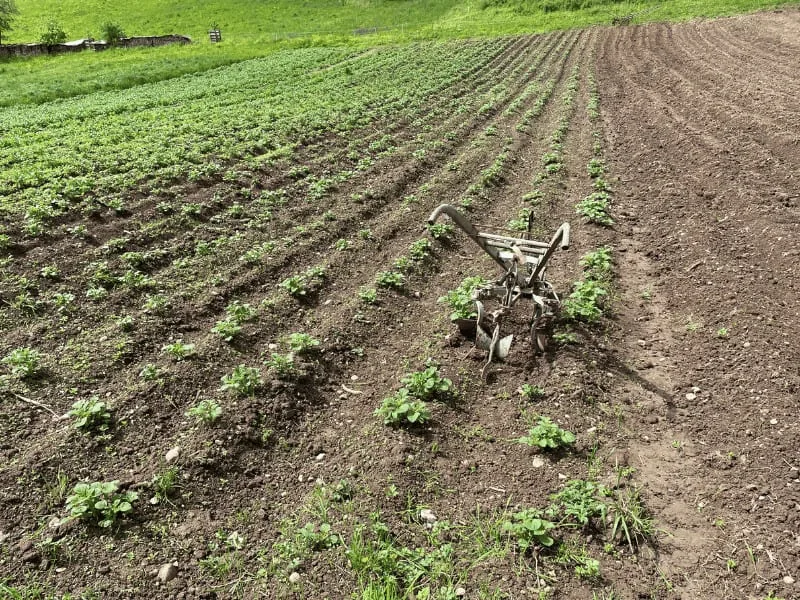
What are Underground Vegetables?
According to Harvard University, underground or root vegetables grow underground at the base of a plant.
Plants that grow underground vegetables employ various tactics for storing energy for future use. The energy they produce is stored in roots, stems, and bulbs.
These vegetables, which usually mature in time for winter, are high in starch.
They have sustained generations of humans and animals through the coldest months each year.
Understanding the life cycle of the different plants will lead to tremendous success in producing vegetables that grow underground and provide healthy nourishment to ward off the cold.
So, if you’re ready to learn what underground vegetables are the most popular nowadays, stay tuned and keep reading!
Table of Contents
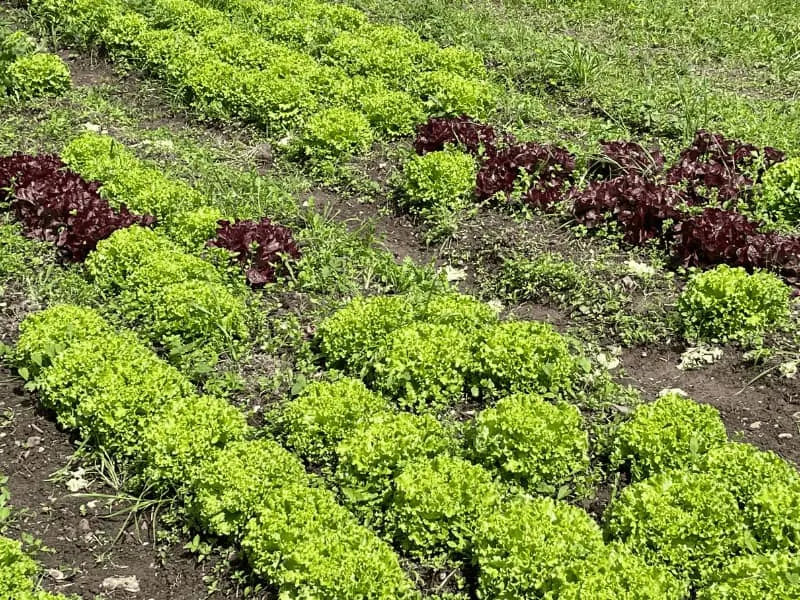
Best 11 Best Underground Vegetables
- Beetroot
- Carrots
- Celeriac
- Jerusalem Artichokes
- Leeks
- Parsnips
- Potatoes
- Radishes
- Swedes
- Sweet potatoes
- Turnips

1. Beetroot
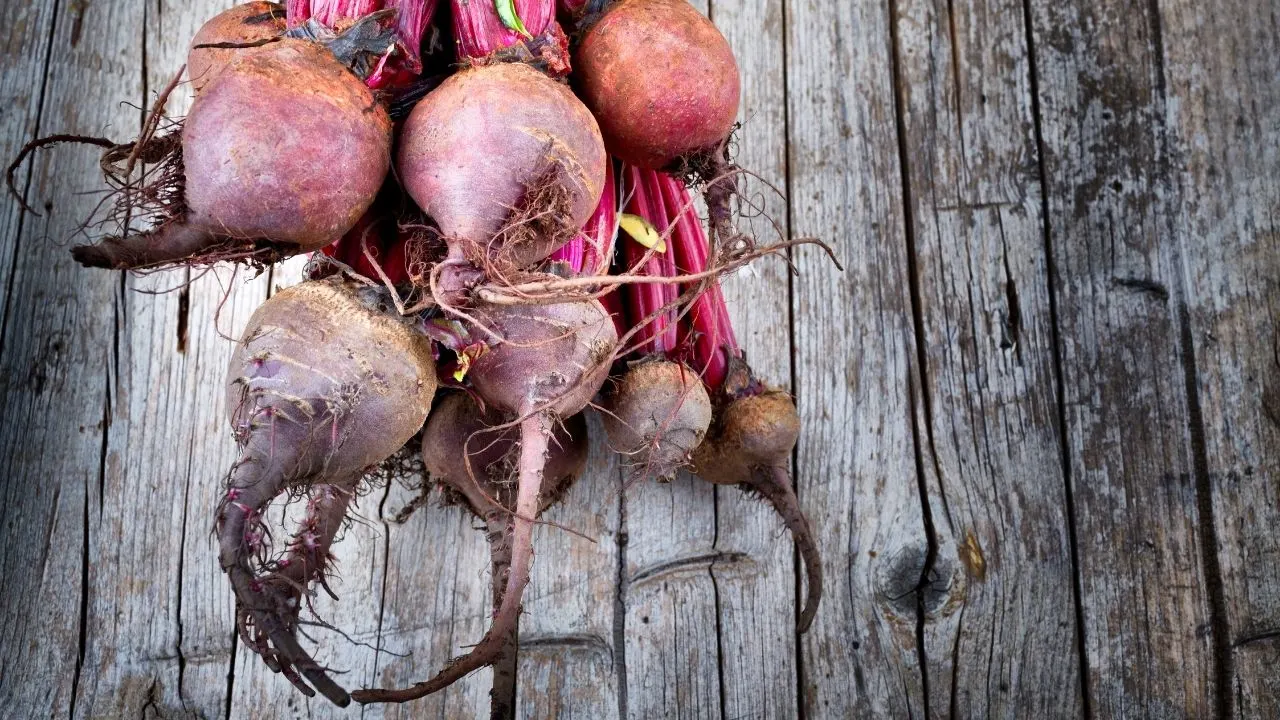
Beetroot Takeaways
| Aspect | Details |
| Species | Beta vulgaris |
| Synonyms | Beet, Beetroot, Chard |
| Family | Amaranthaceae |
| Genus | Beta |
| Growth | Biennial, Herbaceous |
| Height | 5.0 inches |
| Width | 0.8 inch |
| Soil | Well-draining soil mix |
| Watering | Water every 3-7 days |
| Light | Full sun |
| Temperature | Minimum: 50.0°F (10.0°C), Maximum: 85.0°F (29.4°C) |
| Humidity | Minimum: 40.0%, Maximum: 70.0% |
| Fertilizer | Fertilize once a month |
| Propagation | Seeds and cuttings |
| Toxicity | Non-toxic to cats and dogs. Humans are advised to consume beetroot in moderation. |
Beetroot or Beta vulgaris seeds should be sown directly into the ground from early spring to midsummer. Beets are essentially cool-weather plants likely to bolt in the summer heat.
For an early start, sow the seeds in trays four weeks before the last frost date.
Beetroot will tolerate transplanting if the shoots are young and kept moist.
The seedlings appear within 5-8 days, and mature beets can be harvested 10 weeks after sowing.
This growing period can be extended to 12-15 during colder seasons. Baby beets can be harvested eight weeks after sowing.
Beetroot seeds are bound together in small clusters, which may cause a few plants to germinate close together.
The seedlings must be thinned out when 3 inches (7.5 cm) tall to allow each plant a 3-inch radius (7.5 cm) to develop.
The plants can be thinned by cutting the leaves off those you wish to cull. The leaves will be delicious in a salad.
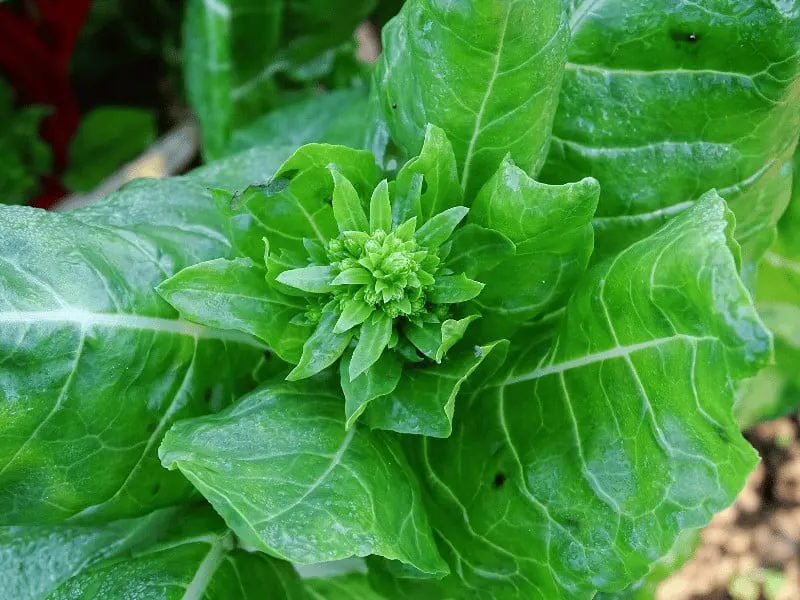
Keep weeds to a minimum by mulching. This will also help to prevent moisture loss around the roots.
Beets prefer loose, well-draining soil with a neutral pH level. You can also read up about the best pH level for vegetables to get this aspect right.
Remove all rocks and other obstructions to uniform root development. If you have clay soil, build mounds to plant the seeds.
Smaller beetroots will be more tender. Beetroot can be harvested from the point at which the root is the size of a golf ball up until it is the size of a tennis ball.
The smaller it is, the more tender it will be.
When harvesting, remove the leaves immediately as they continue to draw nourishment from the root.
If you are short of storage space, beets harvested in winter can be left in the ground without much deterioration in flavor or texture.
2. Carrots
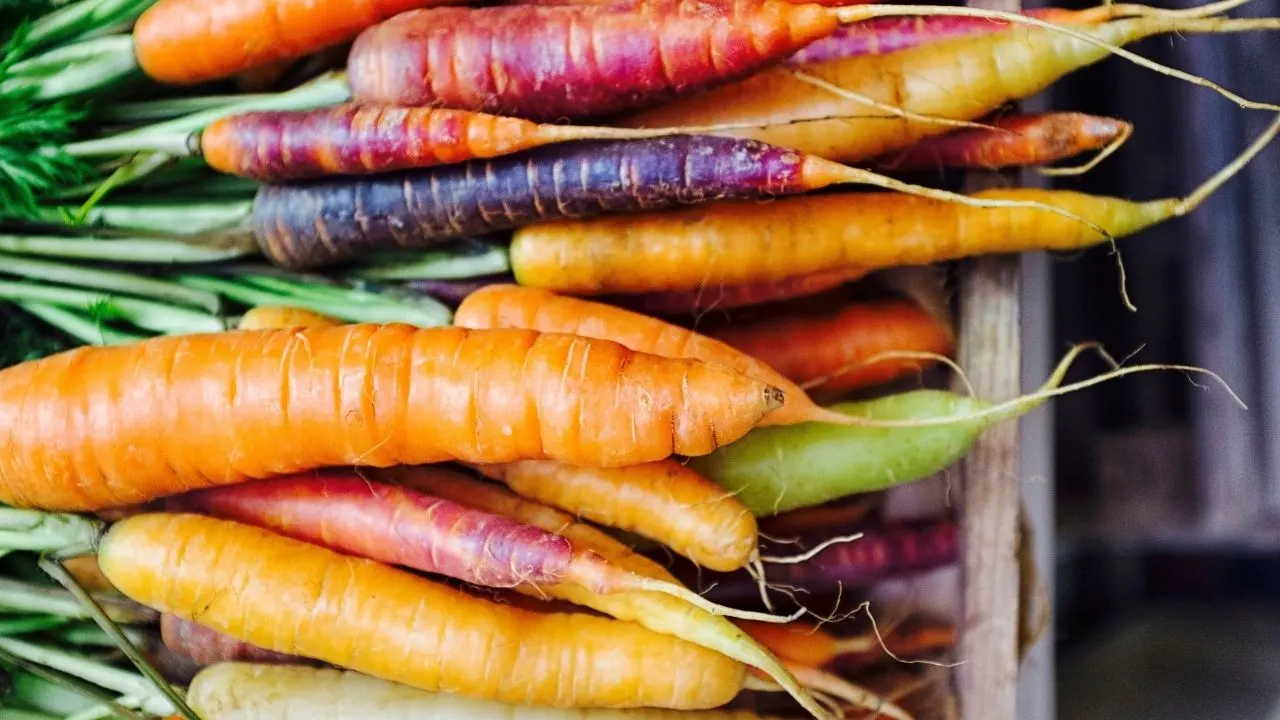
Carrot Takeaways
| Aspect | Details |
| Species | Daucus carota |
| Synonyms | Carrot, wild carrot, European wild carrot, bird's nest, bishop's lace, Queen Anne's lace |
| Family | Apiaceae |
| Genus | Daucus |
| Growth | Biennial herbaceous |
| Height | 4.0 inches |
| Width | 1.0 inch |
| Soil | Well-draining fertile soil mix with good organic matter |
| Watering | Water every 7-14 days |
| Light | Full sun |
| Temperature | Minimum: 41.0°F (5.0°C), Maximum: 80.0°F (26.7°C) |
| Humidity | Minimum: 40.0%, Maximum: 60.0% |
| Fertilizer | Fertilize every 7 days |
| Propagation | Seeds or root cuttings |
| Toxicity | The foliage is mildly toxic and can cause skin irritation in some people. |
Carrots or Daucus carota are year-round crops in mild climates.
They take, on average, 12-16 weeks to mature, depending on the season and variety.
Early cultivars can be harvested in 8-10 weeks.
Those harvested in winter could take 20 weeks to mature and can be stored in the ground for several more weeks without compromising quality.
This taproot vegetable grows from the shoulder down. The length it achieves is dependent on the variety and the temperature.
The optimum length of a carrot is 6-8 inches (15-20 cm), but the root growth will be stunted if the weather is too hot or cold.
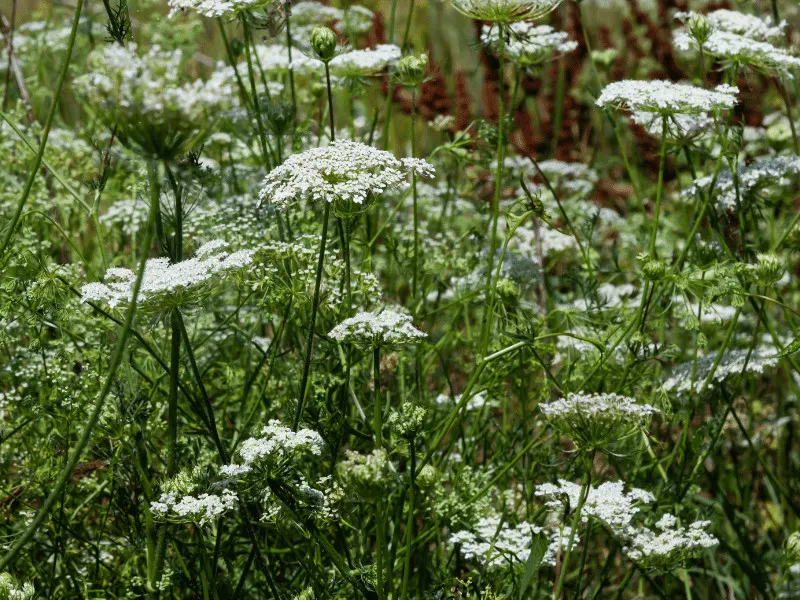
Carrot seeds are tiny and are sown directly into beds. You will need to cover them lightly with soil and kept moist to help with their germination. Mulch lightly with compost.
For autumn planting, sow more thickly as germination will be more challenging in the cooler weather.
Each germinated plant will produce one carrot. Thin them out when the seedlings are an inch tall.
Allow each plant a radius of 3-4 inches of space to grow and a foot depth for root development.
The roots will grow deep in the soil if freshly turned, aerated, and drained well.
The soil must be slightly acidic, with a pH of 6.0 to 6.5. Obstacles will impede root growth, resulting in misshapen vegetables.
Water well until germination. After that, reduce frequency and water deeply to encourage the downward growth of roots and allow them to search for water.
Green carrots at the top have stayed in the ground too long. They are still edible if you remove the green portion.
However, the sooner a carrot is harvested, the tastier it will be.
3. Celeriac ( Celery Root)
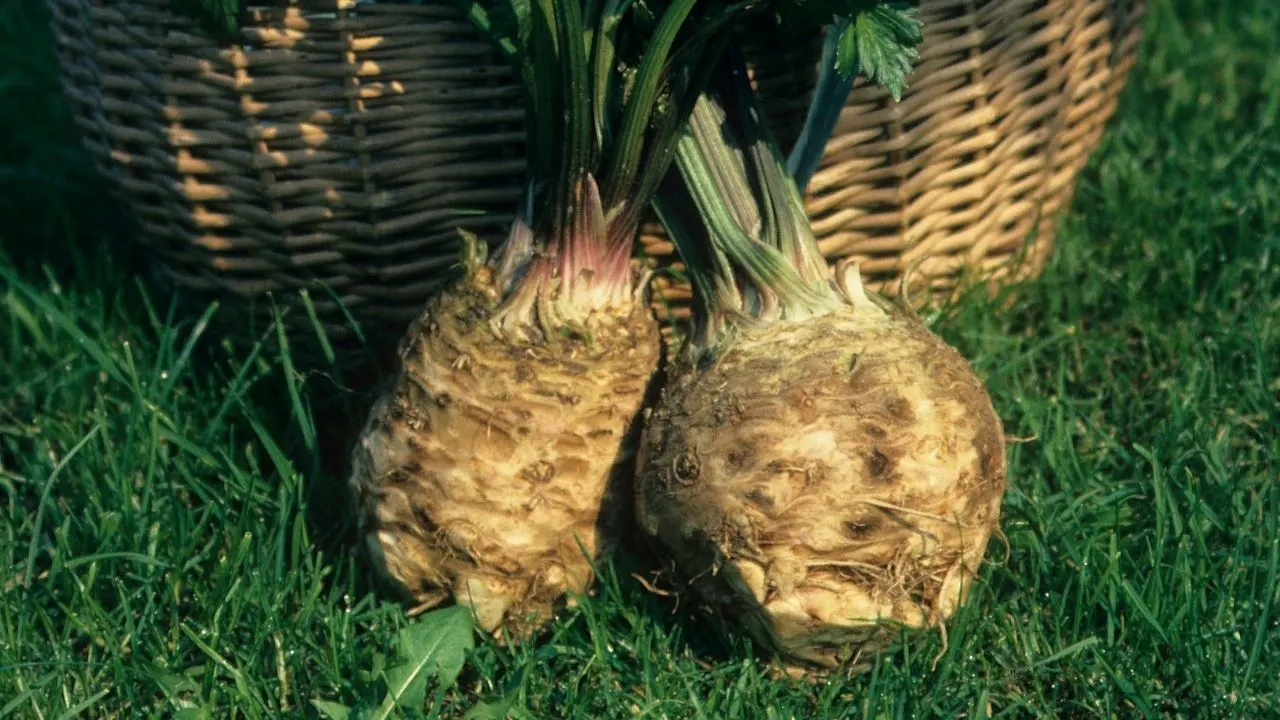
Celeriac Takeaways
| Aspect | Details |
| Species | Apium graveolens |
| Synonyms | Celery, Smallage, Wild Celery |
| Family | Apiaceae |
| Genus | Apium |
| Growth | Biennial, herbaceous |
| Height | 18.0 inch |
| Width | 6.0 inch |
| Soil | Well-draining soil mix |
| Watering | Minimum: 3.0, Maximum: 7.0 |
| Light | Full sun |
| Temperature | Minimum: 60.0°F (15.6°C), Maximum: 75.0°F (23.9°C) |
| Humidity | Minimum: 40.0%, Maximum: 70.0% |
| Fertilizer | Fertilize every 21 - 28 days |
| Propagation | Seeds or stem cuttings |
| Toxicity | The plant is toxic when eaten in excessive amounts. Contains solanine. |
Celeriac or root celery (Apium graveolens) is a variant of the same plant that produces celery. It has a similar taste but is considered to be more earthy.
The edible part of the plant is the swollen stem, called a hypocotyl, which grows underground, just above the roots.
It is similar to the potato in texture but takes longer to cook.
Celeriac is native to the Mediterranean regions of both Europe and Africa. It can tolerate light frost and isn’t particular with its growing conditions.
Start your celeriac seeds off in trays 10-12 weeks before the last expected frost date, and plant out 2 weeks after the last frost, allowing a 6-8 inches radius between plants.
They will germinate 2-3 weeks and 15-20 weeks from transplant to harvest.
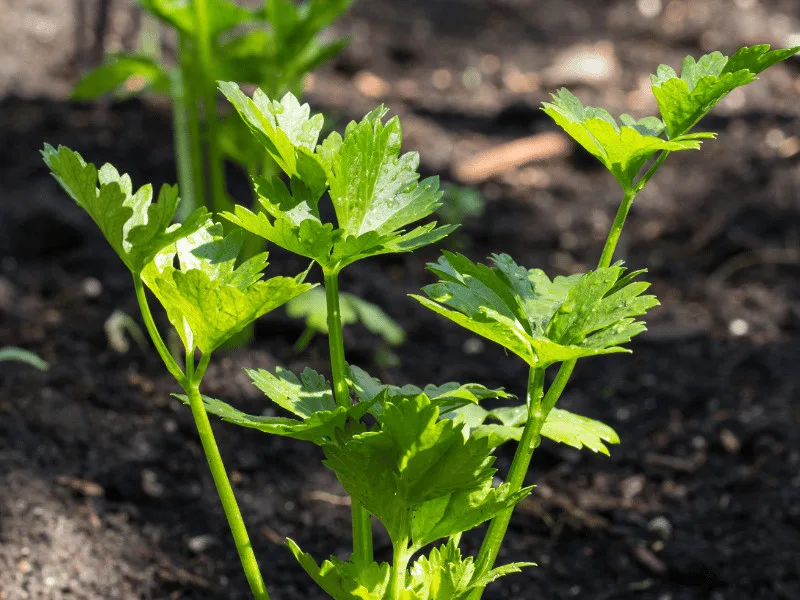
If sowing directly into beds, there will likely be a 50% success rate with germination. Therefore, if necessary, sow the seeds thickly and thin the plants out later.
Also, sow just below the surface and keep the soil moist throughout its life cycle.
Keep the shoulder of the hypocotyl covered by creating a hill around the stem. Harvest after 110-120 days if the vegetable is large enough.
Lift the entire root with a pitchfork, not damaging it.
Celeriac will keep in the fridge for a week and in cool, dark, dry storage for 2-3 months. Otherwise, You can leave the celeriac on the ground unless the soil freezes.
4. Jerusalem Artichokes (Sunroot)
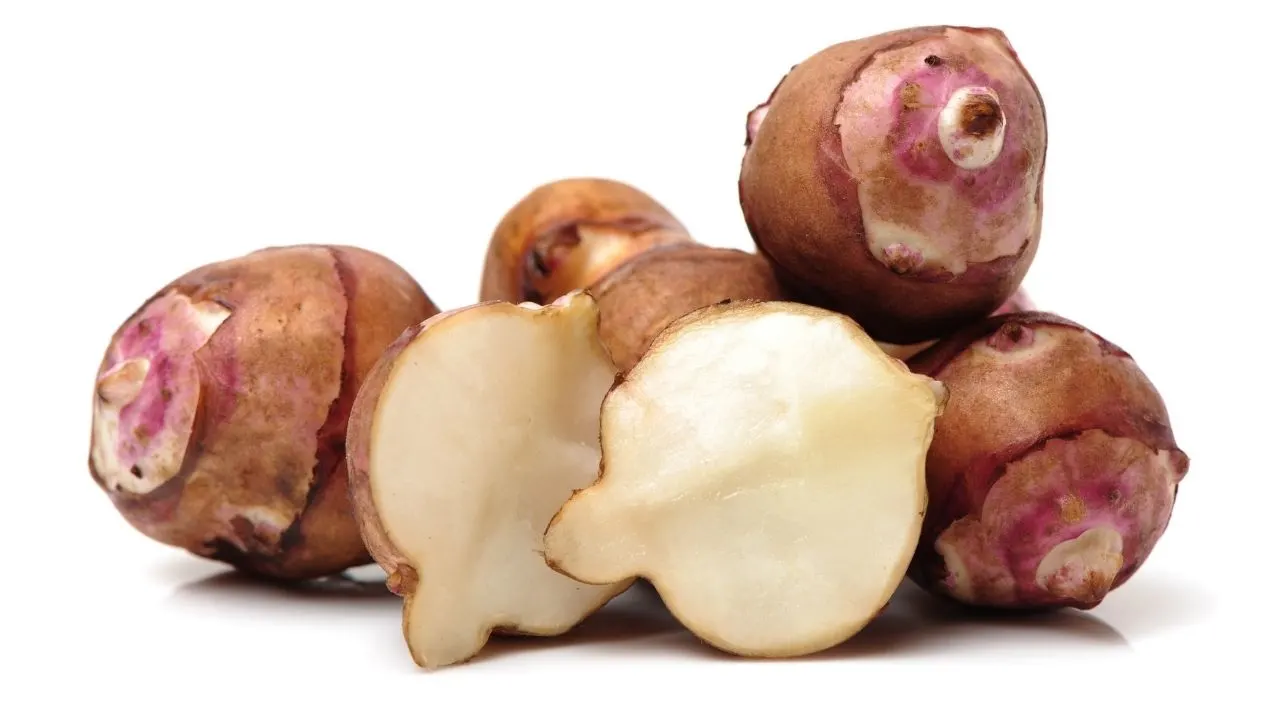
Jerusalem Artichoke Takeaways
| Aspect | Details |
| Species | Helianthus tuberosus |
| Synonyms | Sunroot, sunchoke, wild sunflower, topinambur, earth apple |
| Family | Asteraceae |
| Genus | Helianthus |
| Growth | Upright, spreading |
| Height | 6.0 inches |
| Width | 3.0 inches |
| Soil | Well-draining soil mix |
| Watering | Minimum: 7.0, Maximum: 10.0 |
| Light | Full sun |
| Temperature | Minimum: 50.0°F (10.0°C), Maximum: 85.0°F (29.4°C) |
| Humidity | Minimum: 40.0%, Maximum: 60.0% |
| Fertilizer | Every 14 days |
| Propagation | By division or from tubers |
| Toxicity | Unknown |
Jerusalem Artichokes (Sunroot), or Helianthus tuberosus by its scientific name, are sunflower family members. The plant’s edible part is found in tubers, or food storage reservoirs, growing off the roots.
The tubers also contain the plant’s buds, which are used for propagation.
The whole tuber, or pieces thereof that contain buds is planted about 4 inches underground. Leave each plant a radius of 2 feet of space to grow.
Jerusalem Artichokes are not demanding plants in terms of soil nutrients. They need moderate but consistent watering.
Too much water will affect the quality of the tubers and may cause root rot.
The plants can tolerate heat but prefer cool conditions. They are planted in early spring and lifted in winter.
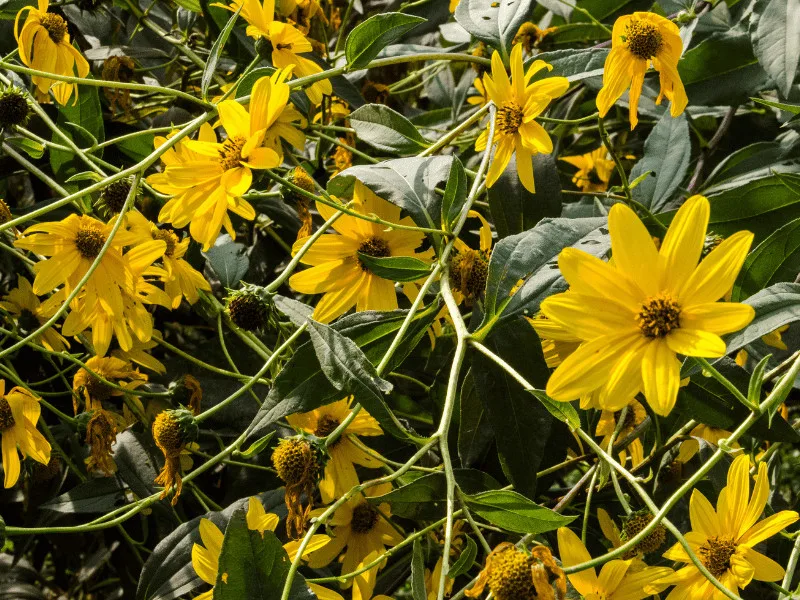
The vegetables do not store as well as potatoes and can be left in the ground until needed, as winter is the plant’s dormant season.
Be sure to harvest Jerusalem artichokes before the weather starts to warm again, as they will begin to sprout. Left on their own, they could become invasive.
5. Leeks
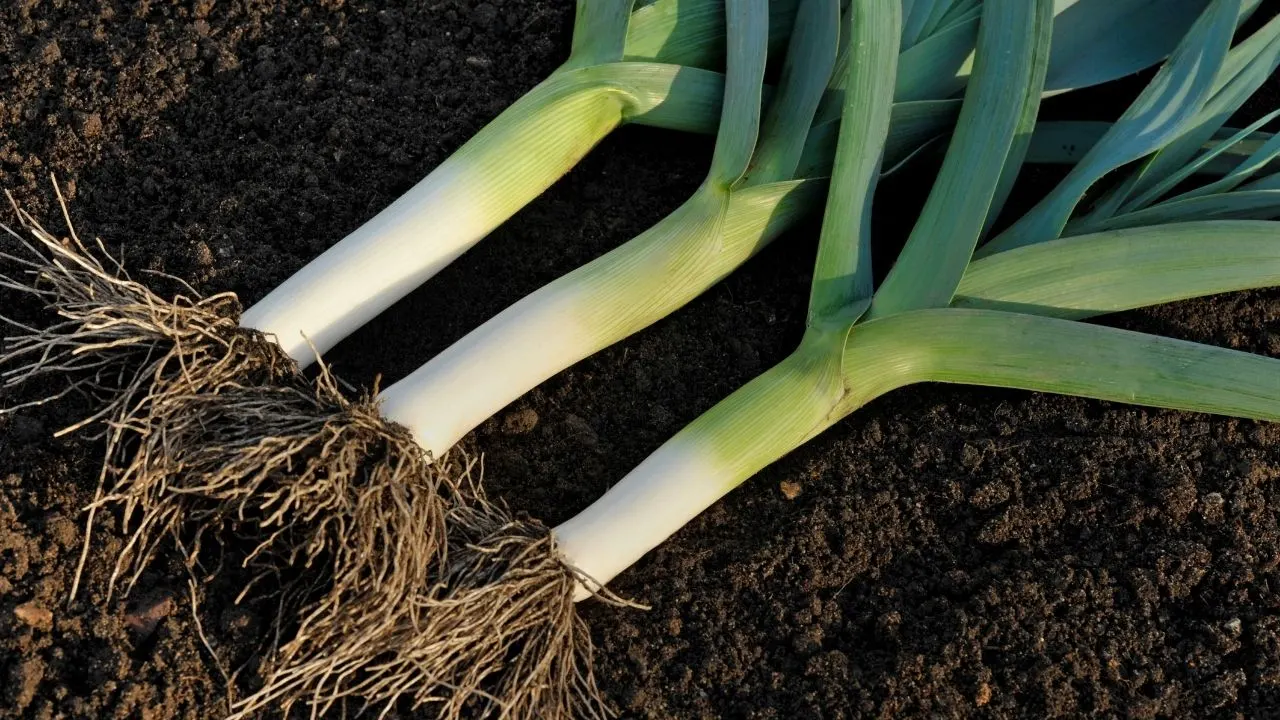
Leek Takeaways
| Aspect | Details |
| Species | Allium porrum |
| Synonyms | Leek, scallion, alliaceous plant, spring onion, green onion, scallion |
| Family | Amaryllidaceae |
| Genus | Allium |
| Growth | Clump-forming, Upright |
| Height | 2.0 feet |
| Width | 0.2 feet |
| Soil | Well-drained soil mix |
| Watering | Minimum: 7.0, Maximum: 14.0 |
| Light | Full sun |
| Temperature | Minimum: 55.0°F (12.8°C), Maximum: 75.0°F (23.9°C) |
| Humidity | Minimum: 50.0%, Maximum: 70.0% |
| Fertilizer | Every 28 days |
| Propagation | By seeds or division |
| Toxicity | unknown |
Leek or Allium porrum, by its scientific name, has a mild onion taste. The sought-after edible portions of the vegetable are the slightly enlarged bulb and the blanched section of the leaf stem.
Blanching is achieved by covering much of the stem with soil throughout the growth cycle.
It is a winter vegetable that can grow in the heat, provided it gets off to a cool start. However, it will bolt and turn to seed if it gets too hot.
Plant seeds in trenches, 6 inches apart and 3-4 inches deep.
As the leaves grow, pile soil up around them. Ensure that you do not cover the growing tip as the plant will begin to rot.
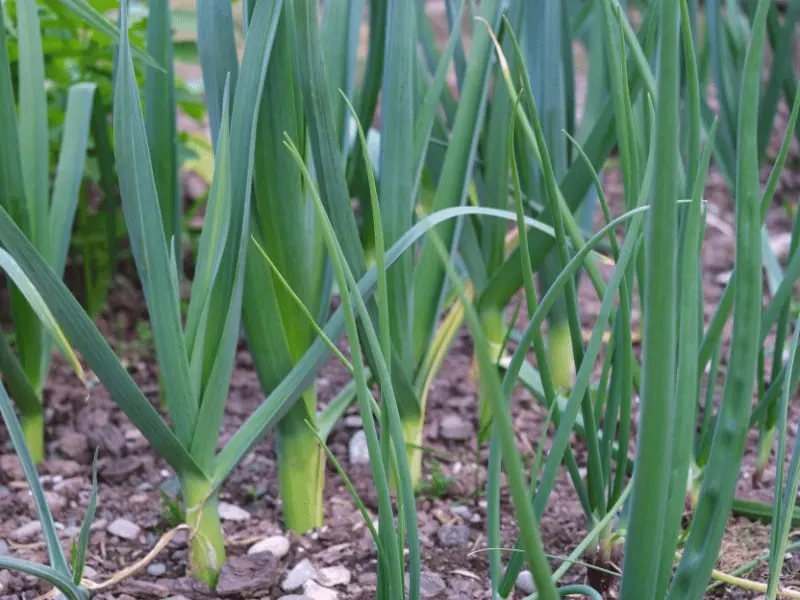
They appreciate fertile soil that is well-drained and slightly acidic.
Foliar feed will encourage the leaf stems to grow. Apply four weeks after planting and again at eight weeks. If you’re curious, you can also look up the best fertilizers for available vegetables.
You can sow the leek seeds on seed trays and plant them out 8 weeks later in early spring, or after 6 weeks, in summer.
Summer-grown crops can be harvested after 11-12 weeks. They will last in the ground for a further 3 weeks.
Winter-grown crops take 15 weeks to mature and can remain in the ground longer.
Harvest the entire plant, being careful not to leave the root base behind, as it is the slightly bulbous area just above the roots that is most desirable.
Clean the vegetable by immersing it upside down in the water to remove any soil gathered between the leaves.
6. Parsnips
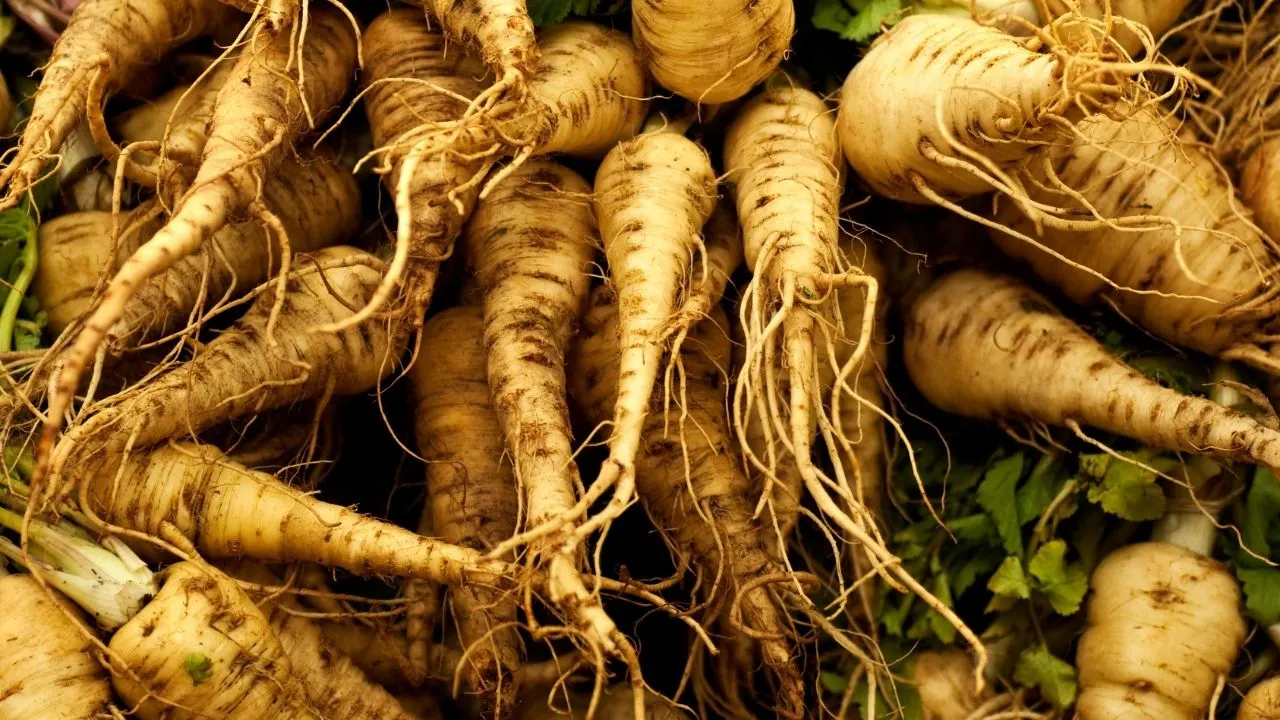
Parsnip Takeaways
| Aspect | Details |
| Species | Pastinaca sativa |
| Synonyms | Parsnip |
| Family | Apiaceae |
| Genus | Pastinaca |
| Growth | Biennial, Herbaceous |
| Height | 4.0 feet |
| Width | 1.0 foot |
| Soil | Well-draining, loamy soil |
| Watering | Minimum: 7.0, Maximum: 10.0 |
| Light | Full sun |
| Temperature | Minimum: 50.0°F (10.0°C), Maximum: 75.0°F (23.9°C) |
| Humidity | Minimum: 40.0%, Maximum: 60.0% |
| Fertilizer | Every two months |
| Propagation | Seeds or root divisions |
| Toxicity | unknown |
Parsnip or Pastinaca sativa, by its scientific name, is a winter vegetable with a long growing cycle. As such, they tend not to be popular with home gardeners.
Seeds do not keep well from one season to the next, so purchase fresh seeds yearly. However, they’re one of the easiest vegetables to grow from seed, so you can still add them to your must-have list for your garden.
Germination is slow and unpredictable. Sow the seeds thickly and thin the crop out if necessary.
Plant the seeds deeply in slightly acidic soil, i.e., with a pH level between 6.0 and 7.0.
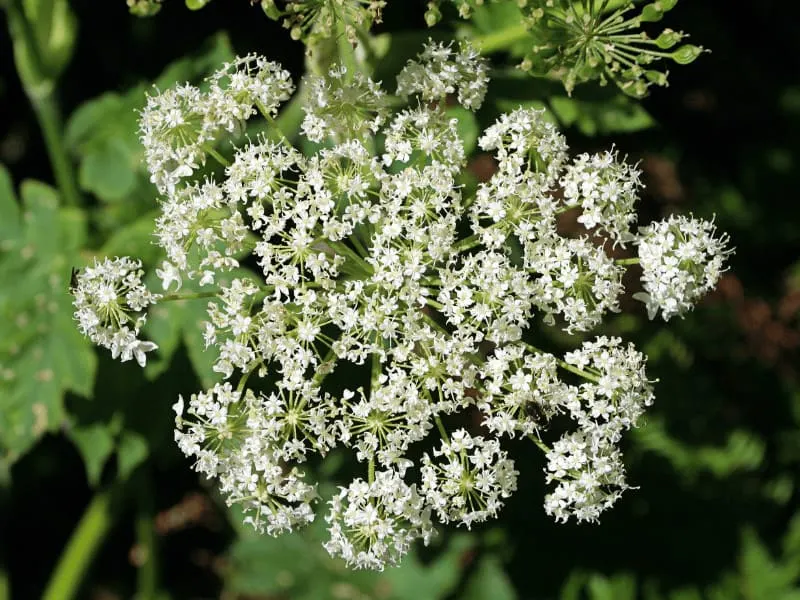
It is the taproot of the plant that is edible. Consequently, there is only one vegetable harvested per plant.
In general, taproot vegetables do not like to be transplanted. Parsnips are no exception.
Water regularly and well. Parsnips need plenty of water to hydrate the leaves, producing food stored in the root.
Crops grown in summer take 20 weeks to harvest from the sowing time. Winter-grown crops take somewhat longer, at 25 weeks.
Parsnips can be left in the ground in winter but need to be lifted before the weather warms up, else they will go into the second year of their life cycle.
This entails depleting the energy stored in the root by feeding the leaves and starting seed production.
7. Potatoes
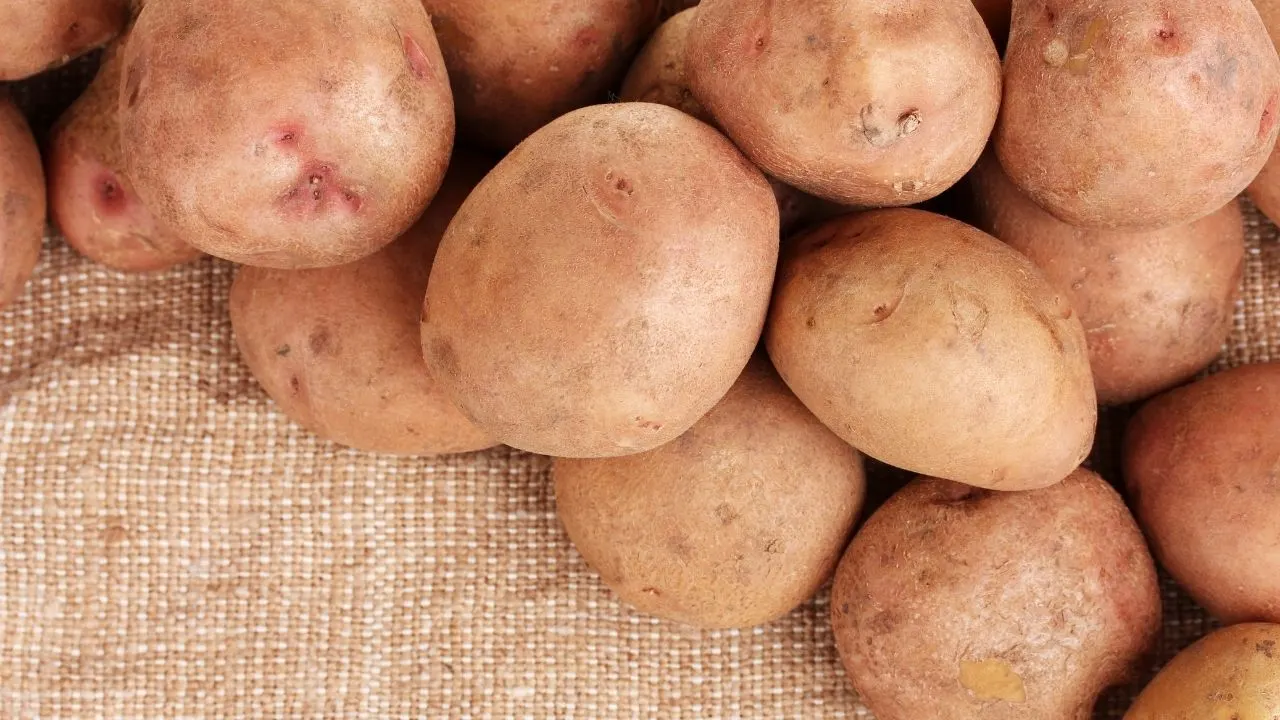
Potatoe Takeaways
| Aspect | Details |
| Species | Solanum tuberosum |
| Synonyms | Irish potato, potato, white potato, yellow potato, red potato, pomme de terre |
| Family | Solanaceae |
| Genus | Solanum |
| Growth | Upright, spreading |
| Height | 2.0 feet |
| Width | 3.0 feet |
| Soil | Well-draining, loamy soil |
| Watering | Minimum: 7.0, Maximum: 10.0 |
| Light | Full sun |
| Temperature | Minimum: 50.0°F (10.0°C), Maximum: 70.0°F (21.1°C) |
| Humidity | Minimum: 40.0%, Maximum: 60.0% |
| Fertilizer | Once a month |
| Propagation | By planting tubers or using seed potatoes |
| Toxicity | Green or sprouting potatoes are toxic. They contain toxic glycoalkaloids (solanine). |
Potatoes or Solanum tuberosum, by its botanical name, are tubers, which are underground stems. They are propagated from buds or ‘eyes’ contained in the tubers from previous crops.
For the best results, these should be allowed to sprout before planting. Other than that, potatoes are one of the few vegetables that are best grown during spring, so better keep track of the timing.
Potatoes need a fair amount of space to grow but can be cultivated in various containers above ground.
Ensure that the containers do not heat the soil, e.g., black plastic pots, or allow the soil to dry out, e.g., wire cages.
They prefer acidic soil, with a pH level between 5.5 and 6.0. The soil needs to be loose and rich in organic matter.
For optimum growth, allow each plant 2-3 feet to grow.
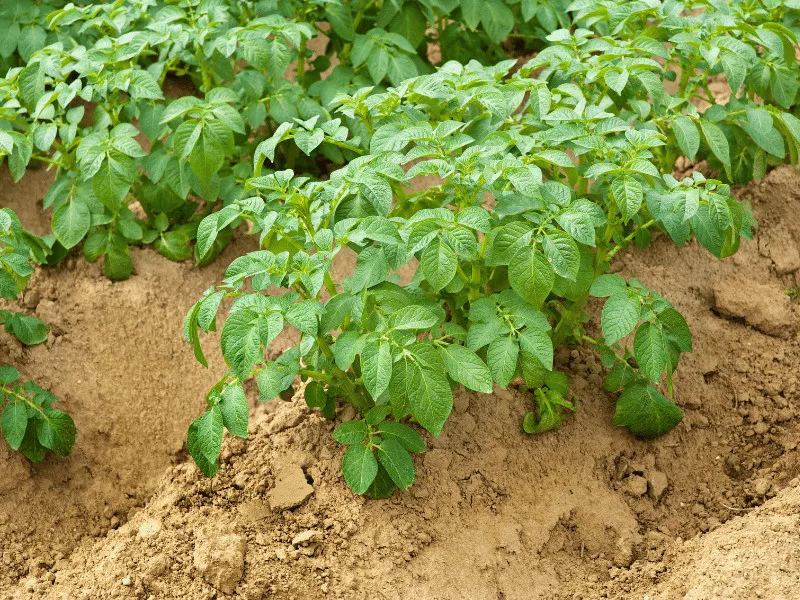
Plant the sprouting buds in moist soil, and ensure that watering is regular and deep throughout the plant’s life.
Too little water will stunt the growth of the plant and tubers, whereas too much water will make the tubers ‘glassy’ and tasteless and may cause the roots to rot.
Fertilize with a nitrogen-rich foliar feed in the first month and then with phosphate for root development.
The tubers are underground stems and will tend to grow toward the surface. Cover them with soil mounds when they appear.
If the plant is in a container, you can add soil layers regularly. Leave enough leaves with access to the light to continue producing food.
When the potato leaves begin to die back, the skin on the tubers begins to harden. This is an indication that harvest time is near. At this point, you can harvest the ‘new’ potatoes.
If you intend to store the potatoes for any time, allow the skin to harden significantly, making them last longer.
Avoid any light from reaching the tubers, or new buds will sprout.
8. Radish
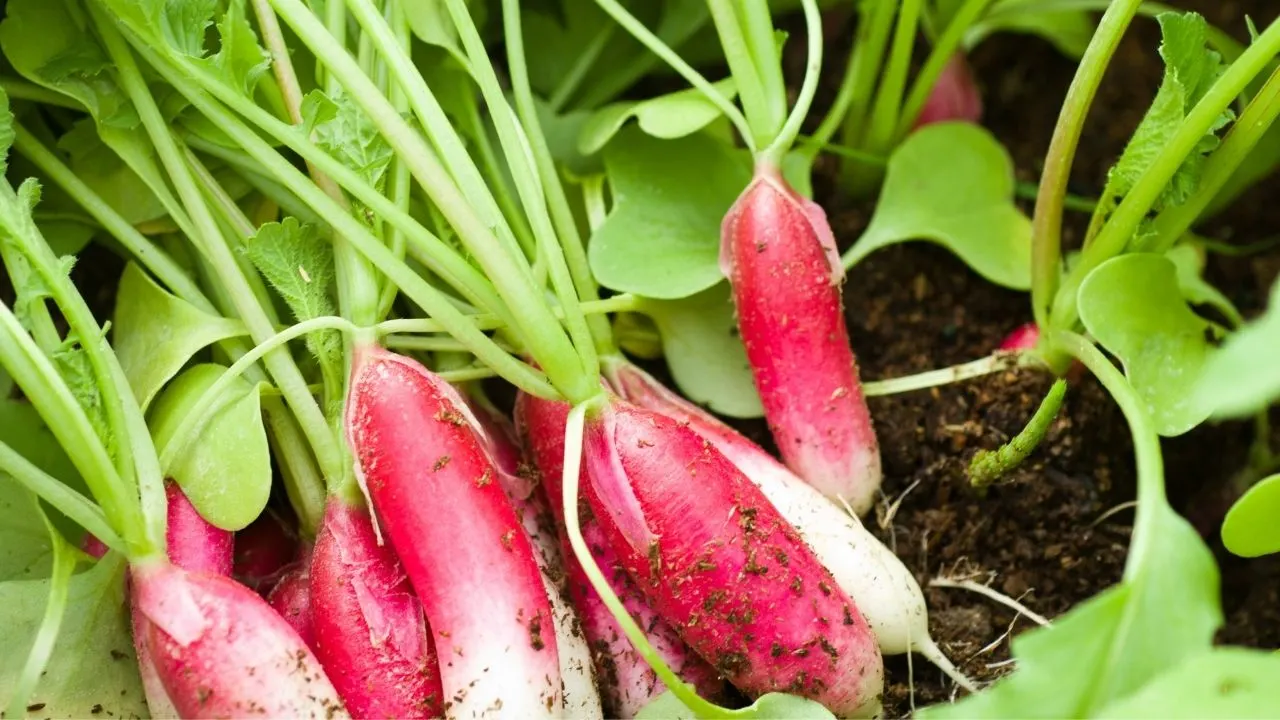
Radish Takeaways
| Aspect | Details |
| Species | Raphanus sativus |
| Synonyms | Radish, Daikon, Mooli |
| Family | Brassicaceae |
| Genus | Raphanus |
| Growth | Annual, Biennial |
| Height | Not specified |
| Width | Not specified |
| Soil | Well-draining soil mix |
| Watering | Water every 3-7 days |
| Light | Full sun |
| Temperature | Minimum: 50.0°F (10.0°C), Maximum: 75.0°F (23.9°C) |
| Humidity | Minimum: 40.0%, Maximum: 60.0% |
| Fertilizer | Once a month |
| Propagation | By seed |
| Toxicity | Not specified |
Radishes, or Raphanus sativus by its botanical name, are little taproot vegetables that are members of the Brassica family, a close relative of the turnip, and its evil cousin, the horseradish.
Radishes are best eaten raw, especially when small and freshly picked.
They range from white to red, purple, and even black. They have a slightly peppery taste, increasing the darker the plant is and the older it gets. They add taste and texture to a salad or sandwich.
There are spring and winter varieties.
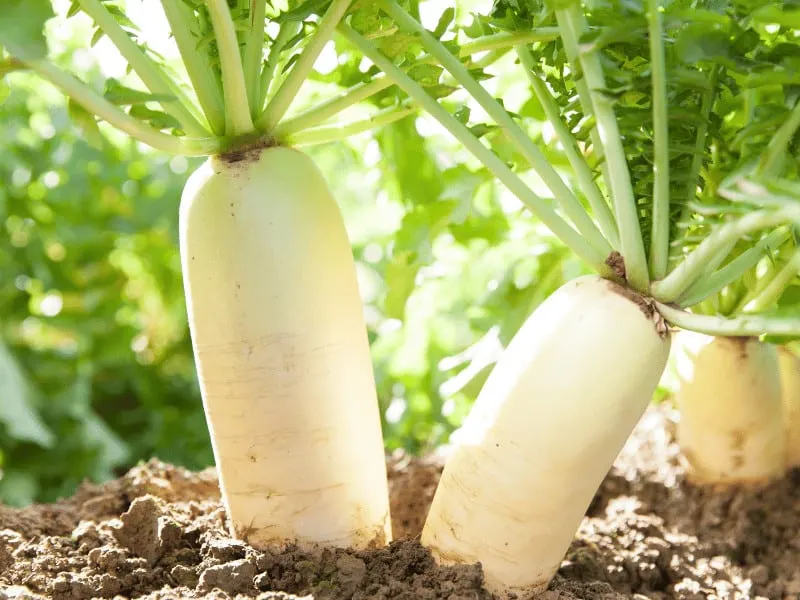
Spring radishes prefer cooler weather and must be harvested as soon as ready. Winter radishes stay in the ground longer and have a more distinctive flavor.
They also keep better once harvested.
Spring radishes are very fast-growing. They produce seedlings within 5-8 days and are ready for harvesting in about 4-6 weeks.
One trick is using single rows of radishes between your other vegetable beds. They will sprout first and help to demarcate the boundaries.
They need well-drained, friable soil, a sunny position, and frequent watering to encourage rapid growth.
9. Swedes (Rutabaga)
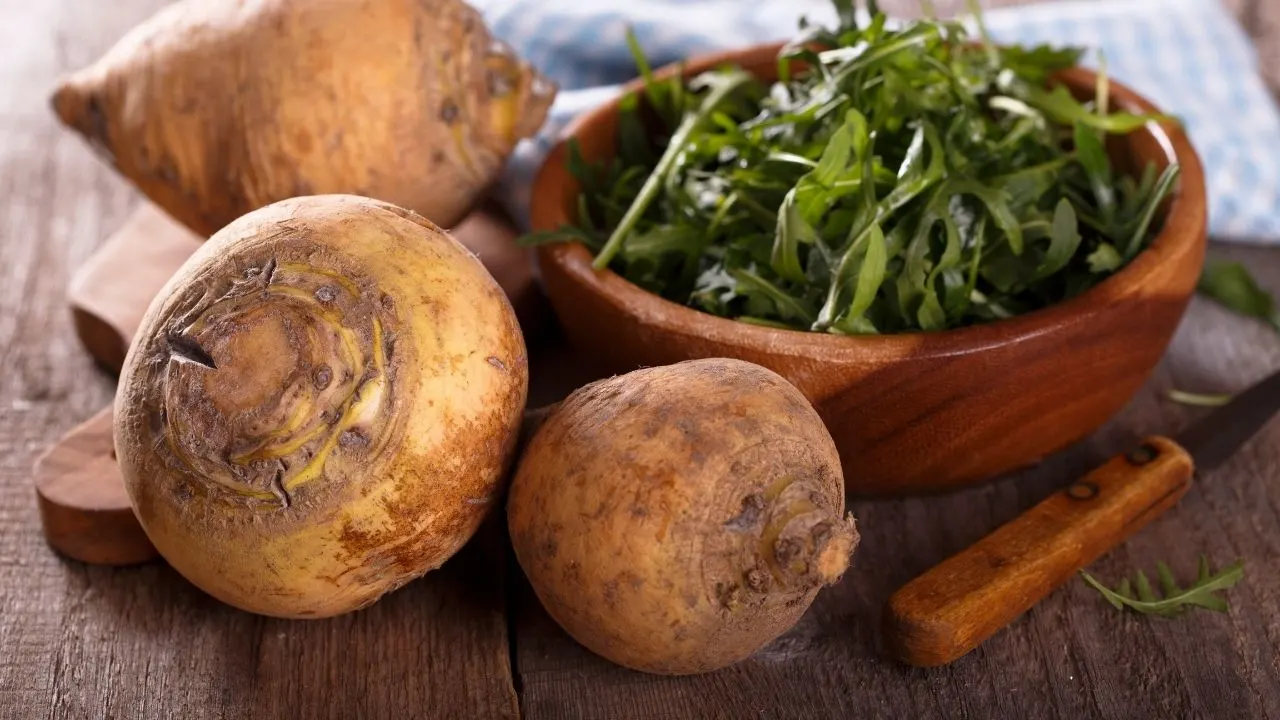
Swedes Takeaways
| Aspect | Details |
| Species | Brassica napus |
| Synonyms | Not specified |
| Family | Brassicaceae |
| Genus | Brassica |
| Growth | Annual, Biennial |
| Height | 3.0 feet |
| Width | 2.0 feet |
| Soil | Well-draining soil mix |
| Watering | Water every 7-10 days |
| Light | Full sun |
| Temperature | Minimum: 50.0°F (10.0°C), Maximum: 75.0°F (23.9°C) |
| Humidity | Minimum: 40.0%, Maximum: 75.0% |
| Fertilizer | Fertilize every 7 days |
| Propagation | By seeds or cuttings |
| Toxicity | Unknown |
Swedes, or Brassica napus by its scientific name, are classified as a brassica, a cross between turnips and cabbages. It originated in Scandinavia, hence the name.
It is a cool-weather plant that is sown directly into the soil. Seeds germinate between 7 and 10 days.
Unlike other taproot vegetables, however, it can be sown in trays and then transplanted at about 5 weeks. Allow 8-12 inches between plants as the root becomes quite rotund.
They are low-maintenance plants, but the soil needs to be kept moist throughout the growth cycle.
Watering them deeply over some time is quite better than frequent, shallow watering as you want the roots to grow down deep in search of water.
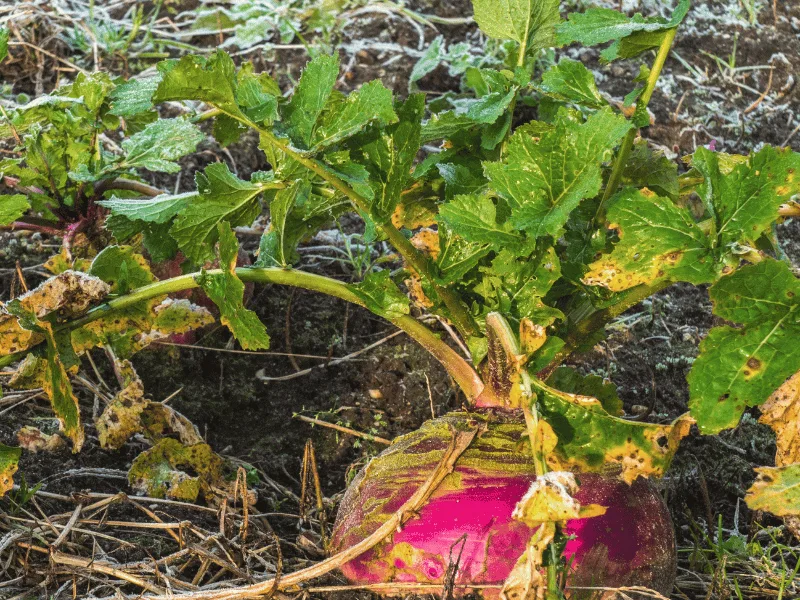
The roots start swelling at about 14 weeks. The Swedes should have all they need to produce healthy vegetables if they have fertile, friable soil.
The plant should provide a good covering of leaves to mulch the soil and keep the roots cool.
You can harvest Swedes from week 20 when they are large enough. Grasp the root and twist it out of the ground.
Cut any leaves and dust off any soil if you intend to store it for later.
10. Sweet Potatoes
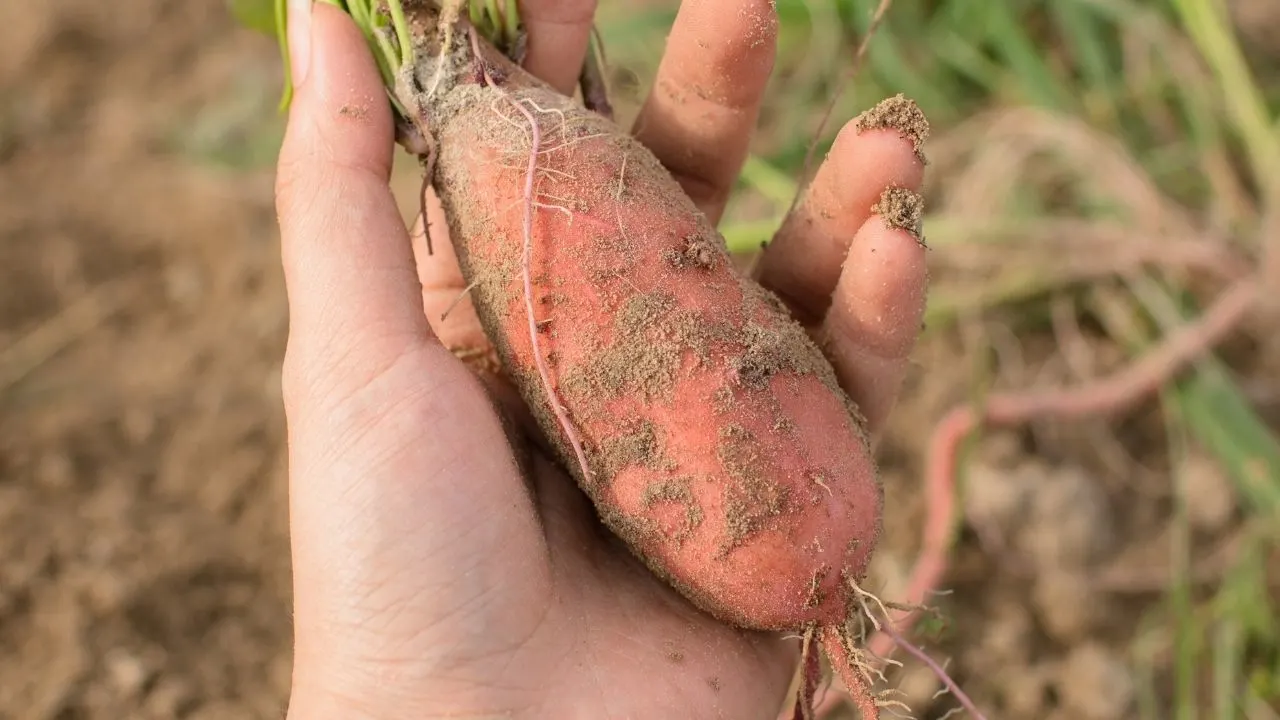
Sweet Potato Takeaways
| Aspect | Details |
| Species | Ipomoea batatas |
| Synonyms | Sweet potato vine, sweet potato plant |
| Family | Convolvulaceae |
| Genus | Ipomoea |
| Growth | Trailing, vining |
| Height | 1.0 foot |
| Width | 6.0 feet |
| Soil | Well-draining soil mix |
| Watering | Water every 3 to 7 days |
| Light | Full sun |
| Temperature | Minimum: 60.0°F (15.6°C), Maximum: 85.0°F (29.4°C) |
| Humidity | Minimum: 40.0%, Maximum: 70.0% |
| Fertilizer | 1.0 |
| Propagation | Stem cuttings or slips |
| Toxicity | Not specified |
Sweet potatoes are warm-weather plants that are planted in the form of slips only once any danger of frost has passed.
Slips can be bought or produced at home while the weather is still cool.
Half-bury a sweet potato in potting soil, or several if you wish, in a flat planting tray. Place the tray on a heating pad, under grow lamps, or in an area with good natural light.
Shoots will begin to appear on the surface of the vegetable. Each sweet potato you plant can produce up to 50 slips.
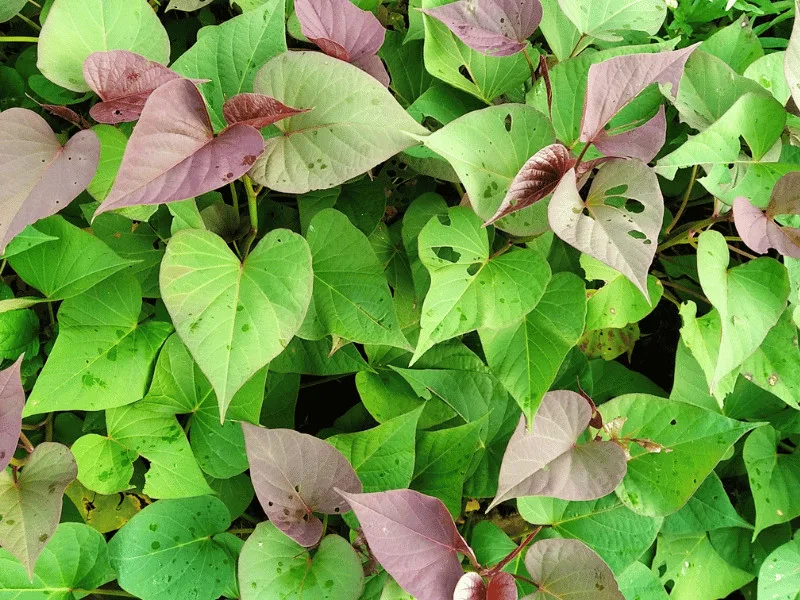
Cut these off at soil level and suspend them in a container with water to encourage root formation.
The rooted slips can be planted when their roots are at least an inch long if the weather permits. Handle the slips with care, as they will not thrive if damaged.
They need to be planted in loose, well-draining soil so that the tubers do not meet resistance when growing.
Sweet potatoes either grow into bushes, which need a radius of 3 feet of space to grow, or vines, which could need up to 20 feet.
Fertilize the foliage with nitrogen when the plants are growing vigorously and phosphate to encourage the development of the tuber.
Initially, the plants will need daily watering to prevent drying out the roots. As the plants grow, this can gradually be reduced to weekly watering. The leaves will form a mulch and keep the roots cool.
The plant’s edible portion is its tuberous root. Unlike tap roots vegetables, numerous vegetables can be harvested from one plant.
Sweet potatoes are harvested when the roots are large enough to eat, usually between 3-5 months after planting.
The plant leaves should start to go yellow, but if they are still green, cut them off a fortnight before harvesting to make access to the roots easier.
Wait until the soil is dry around the plant, and dig a foot around the root system to lift the sweet potatoes without damaging them.
Dry them out for a few hours in the sun before storing them in an area with good air circulation and a cool and dark one.
11. Turnips
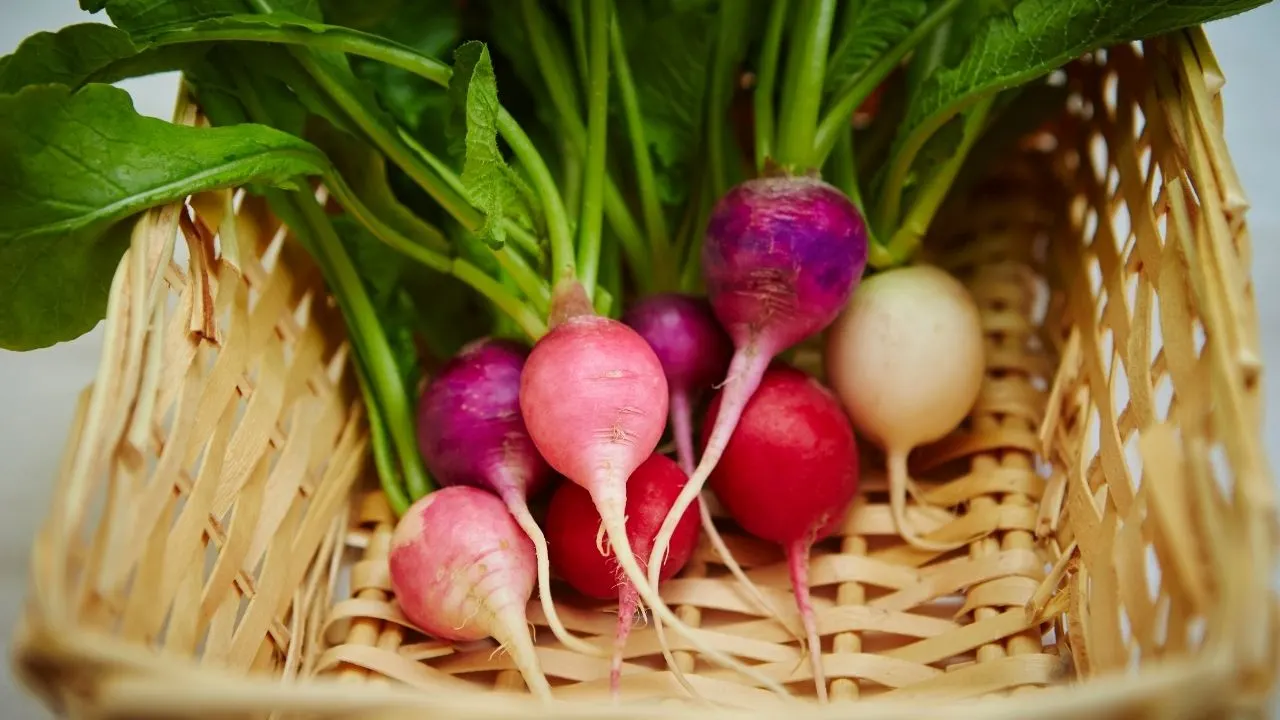
Turnip Takeaways
| Aspect | Details |
| Species | Brassica rapa |
| Synonyms | Field mustard, turnip rape, bird rape |
| Family | Brassicaceae |
| Genus | Brassica |
| Growth | Biennial, herbaceous |
| Height | 2.0 feet |
| Width | 1.0 foot |
| Soil | Well-draining and fertile soil mix |
| Watering | Water every 3-7 days |
| Light | Full sun |
| Temperature | Minimum: 50.0°F (10.0°C), Maximum: 85.0°F (29.4°C) |
| Humidity | Minimum: 40.0%, Maximum: 70.0% |
| Fertilizer | Once a month |
| Propagation | Propagate through seeds or cuttings |
| Toxicity | Not specified |
Turnips are cousins of the radish family. They are larger taproot vegetables that have a slightly peppery taste.
They can be eaten raw or cooked in stews, casseroles, and soups.
Cool-weather plants should be planted in late winter or early spring for summer harvesting before the soil warms up significantly.
For winter harvesting, plant the seeds after the height of summer or early fall.
The tiny seeds are planted directly into slightly acidic soil, which should be loose and drained well.
Thin the plants out once they start storing food in the roots, leaving a 6-inch radius around each plant.
They will grow optimally with regular watering. Do not allow the soil around the root to dry out.

Too little water will result in an underdeveloped and stringy vegetable. However, too much water will cause the soil to be waterlogged and the root rot.
Fertilize once with a foliar feed, about a month after planting, to encourage the leaf growth necessary to produce the food to be stored in the turnip.
Add a root fertilizer once the leaves are established.
Summer crops should be harvested before maturity to capture a milder taste and a crunchier vegetable.
Winter crops can be left in the ground until required, as the dormant plant causes little change in quality or taste.
Growing Underground Vegetables
Most plants that produce underground vegetables are biennial, meaning they have a two-year cycle. The years may not run consecutively.
When a seed is germinated, the plant’s initial energy is channeled into growing leaves. The chlorophyll in the leaves produces food for the plant.
When there is sufficient foliage to keep the roots cool, the plant starts storing the food underground in various forms, namely:
- Bulbs, made up of layers of leaves, growing just above the roots
- Taproots, one per plant
- Tubers are underground stems that tend to grow near the surface
- Tuberous roots, where the food in the roots themselves
After the first year of the cycle, the leaves die off, leaving energy stored underground for the next part of the growth cycle.
When conditions are favorable, the plant sends forth shoots from the roots, and leaves start to grow.
The plant’s primary function, carried out in the second year, is the production of seeds so that the plant can reproduce.
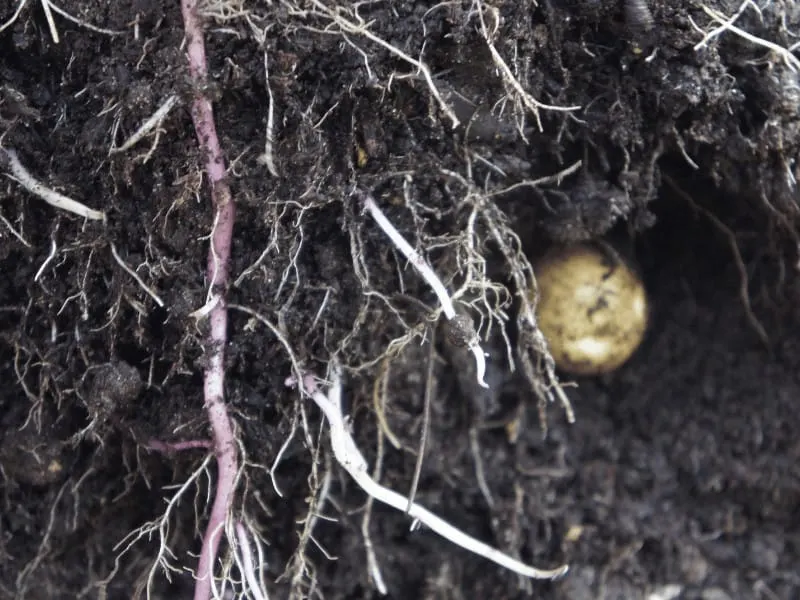
Most underground vegetables have the following characteristics in common:
- They prefer cool weather for the start of their growing season
- There are often two growing seasons – autumn to winter and spring to summer.
- They like loose soil deep enough to accommodate their various root systems.
- They want regular, deep watering that encourages root growth.
- They have two growth phases, leaves and then roots
- Initially, they need fertilizer for leaf growth and then root growth.
- Most should be sown directly into the soil. Transplanting may damage the root systems.
- Individual plants require space underground for the vegetables to develop
Underground Vegetables To Plant In Spring
Out of the vegetables that grow underground, the following are best planted in spring:
- Potatoes
- Sweet potatoes
- Celeriac
- Carrots
- Jerusalem Artichokes
- Leeks
Read this for a full list of vegetables to plant in spring.
Conclusion To Vegetables Grown Underground
The following vegetables are grown underground: beetroot, carrots, celeriac, Jerusalem artichokes, leeks, parsnips, potatoes, radishes, swedes, sweet potatoes, and turnips.

Daniel has been a plant enthusiast for over 20 years. He owns hundreds of houseplants and prepares for the chili growing seasons yearly with great anticipation. His favorite plants are plant species in the Araceae family, such as Monstera, Philodendron, and Anthurium. He also loves gardening and is growing hot peppers, tomatoes, and many more vegetables.

